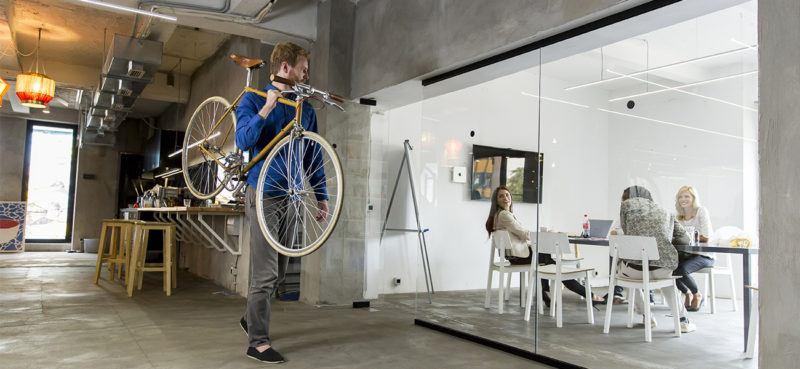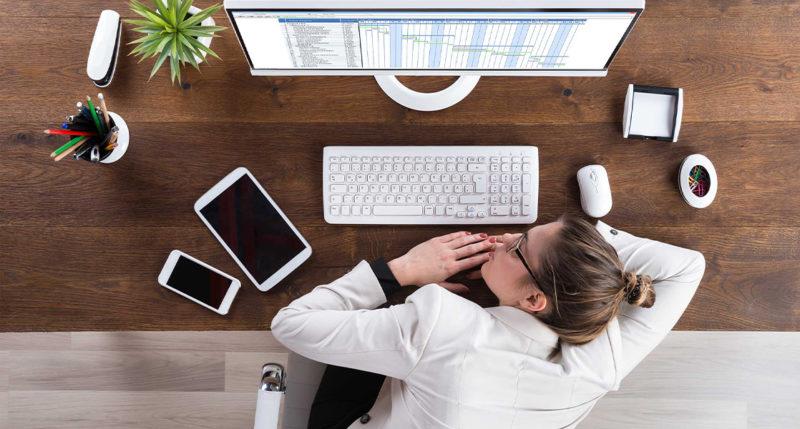
Did you know, roughly 70% of professionals across the globe work away from the office at least one day-a-week? And, in the UK alone, there are over 4 million people regularly working from home? As technology improves and employers become more accommodating to individual employee needs, more and more of us are taking to working remotely.
From saving on travel time and costs to reduced overhead expenses and improved efficiency and motivation, there are plenty of advantages for both employee and employer when it comes to working from home. But there are bad habits and distractions that can get in the way too if we’re not too careful.
So, to help you thrive when working away from the office, we’ve put together four tips that will set you up to succeed.
Move Your Feet
We are living in ‘the age of the chair’. Research shows the UK population spends, on average, 9.5 hours each day in a sedentary (seated) position and some experts believe this sedentary lifestyle could be more harmful than smoking!
Working from home often only adds to those minutes spent on our behinds. Offices may not be the most active places but, compared to getting out of bed and setting up your laptop at home, they’re like running a marathon.
At home we walk less and sit more. There aren’t as many stairs to climb to find meeting rooms. It’s a shorter distance to travel to make the tea run. Not to mention, a much shorter commute. It can be easy to open your inbox first thing in the morning and still be in the exact same position a few hours later.
Even a few minutes out your seat – working from a standing position or taking a wonder around the flat/house – can help. Try setting an alarm in your work calendar or phone to remind you once an hour to get up and shake things off.
Equip Yourself
Talking of chairs, making sure you have the right equipment in place is a must. Check your own place of employment’s well-being initiatives, but they should be helping their remote workers when it comes to being comfortable, safe and healthy in their chosen place of work.
Get a proper office chair. Don’t settle for working from the sofa or standard kitchen chair – that’s a one-way road to musculoskeletal issues. Personnel Today recently noted that 37% of surveyed home workers had experienced back pain since beginning remote work.
As a regular home worker myself, I can recommend investing in a laptop stand too. With so much time spent in front of a computer, making sure you are in a healthy, comfortable position when doing so is important to long-term health.
Keep Things Separate
Separating work and home life can be difficult when your place of work is your home. Indeed, a CIPD study found 32% of remote workers couldn’t switch off in their personal time, whilst a Cardiff University study found people working remotely struggled to relax and unwind after work compared to office workers (44% vs 38%).
Depending on your situation, try to find ways to separate work life from your normal home life. If you have enough space, creating a designated home office can help you switch off when you close that door at 5pm. Or, if your space is more limited, even an organized workspace that can be packed away when you finish for the day can help make that psychological break from work to leisure. Even simple things like getting changed into different clothes when your work day is done can help too.
Stay Connected
Home working can help boost productivity and motivation as there are fewer distractions like office gossip and the all-important decision of where to go for lunch to get in the way! But those little human connections can be important too.
Words like ‘remote’, ‘lonely’ and ‘isolated’ cropped up in a recent survey asking people to describe working from home. For your own mental health, it is important to stay connected to the outside world. Breaking up the day with a walk outside, popping to the shops, calling a friend, or working in the hustle and bustle of a coffee shop can help maintain those social connections and, in turn, boost your mental well-being.
It’s important to stay connected with work, too. Improved technology allows employees to stay connected to employers via video conference calls and collaboration tools. But there is a responsibility on the employer, too, to make sure they’re engaging with remote workers and keeping you in the loop on important matters.
Find out how to support your well-being with accurate data while working remotely.
You might also be interested in

Balancing Good and Bad Wellness Choices: How to Get it Right?
Finding the balance between good and not-so-good choices is about what works for you.

Want to Boost Your Productivity at Work? Here’s How Increasing Physical Activity Can Help
Introducing physical activity into your routine can improve multiple areas important for workplace productivity.

What is Presenteeism? And How Can We Fix the Multi-billion-pound Problem?
Paying proper attention to the well-being of staff will lead to a better working environment and happier, more productive employees.



